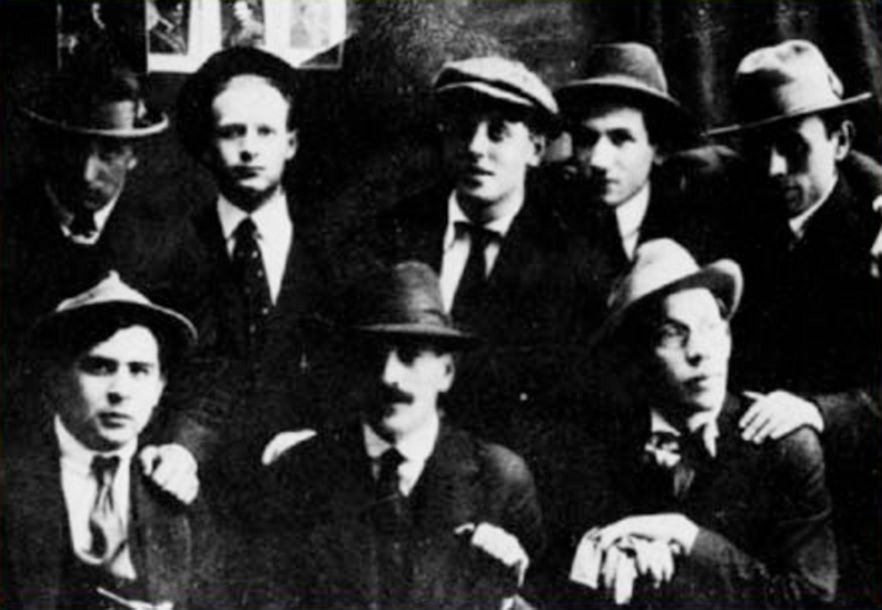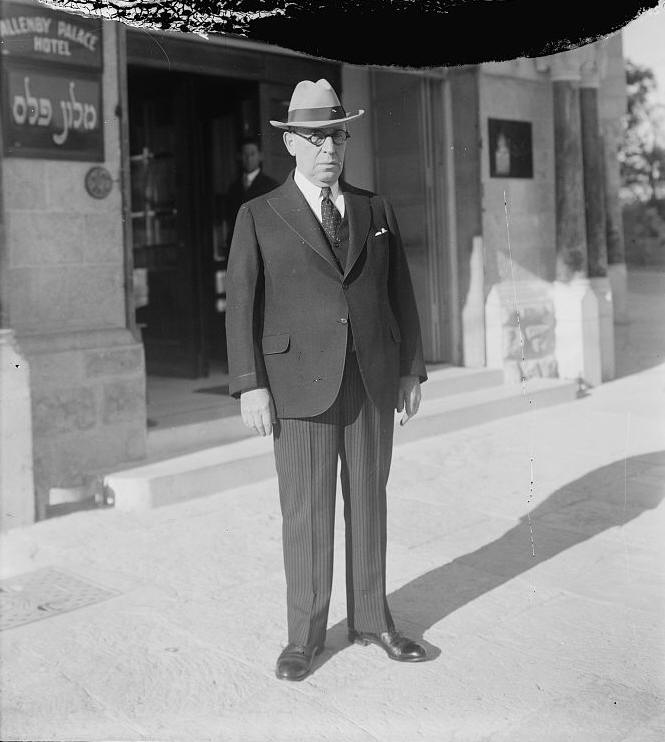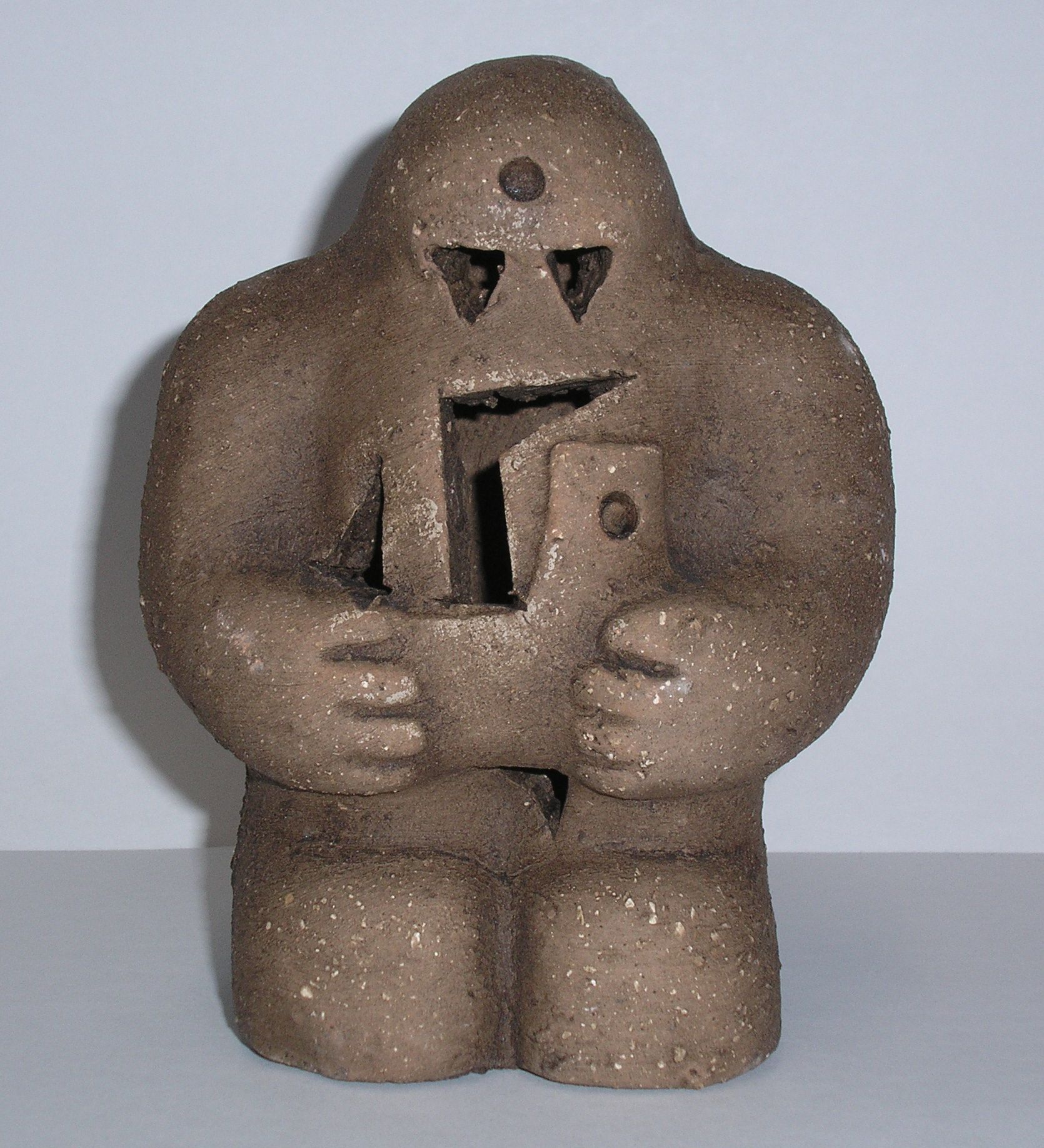|
H. Leivick
H. Leivick (Yiddish: ה. לײװיק; pen name of Leivick Halpern, December 25, 1888 – December 23, 1962) was a Yiddish language writer, known for his 1921 "dramatic poem in eight scenes" '' The Golem''. He also wrote many highly political, realistic plays, including "Shop." He adopted the pen name of Leivick to avoid being confused with Moyshe-Leyb Halpern, another prominent Yiddish poet. Early life and imprisonment Leivick was born in Chervyen, Belarus, the oldest of nine children. His father was a Yiddish instructor for young servants. Leivick was raised in a traditional Jewish household and attended a yeshiva for several years, an experience he thoroughly disliked and depicted in his dramatic poem ''Chains of the Messiah.'' Leivick joined the Jewish Bund before or during the 1905 Russian Revolution. The influence of the organization helped to convince Leivick to become secular and to focus his writing on Yiddish rather than Hebrew. In 1906 Leivick was arrested by Russian ... [...More Info...] [...Related Items...] OR: [Wikipedia] [Google] [Baidu] |
Yiddish
Yiddish (, or , ''yidish'' or ''idish'', , ; , ''Yidish-Taytsh'', ) is a West Germanic language historically spoken by Ashkenazi Jews. It originated during the 9th century in Central Europe, providing the nascent Ashkenazi community with a vernacular based on High German fused with many elements taken from Hebrew (notably Mishnaic) and to some extent Aramaic. Most varieties of Yiddish include elements of Slavic languages and the vocabulary contains traces of Romance languages.Aram Yardumian"A Tale of Two Hypotheses: Genetics and the Ethnogenesis of Ashkenazi Jewry".University of Pennsylvania. 2013. Yiddish is primarily written in the Hebrew alphabet. Prior to World War II, its worldwide peak was 11 million, with the number of speakers in the United States and Canada then totaling 150,000. Eighty-five percent of the approximately six million Jews who were murdered in the Holocaust were Yiddish speakers,Solomon Birnbaum, ''Grammatik der jiddischen Sprache'' (4., erg. Aufl., Hambu ... [...More Info...] [...Related Items...] OR: [Wikipedia] [Google] [Baidu] |
Di Yunge
Di Yunge was the first major literary movement of Yiddish poetry in America. During the early 20th century, their work emphasized romanticism, individualism, subjectivism, and free and indirect expression. History Yiddish literature was most prominent in Eastern Europe during the century preceding World War I. In the period leading up to World War II, Yiddish literature in Poland and Russia changed in response to the political status of Jews. For a time in-between, countries across the Americas developed a literature of new immigrants, of which Di Yunge was the first important group of Yiddish poets in America. The writers of the literary movement known as Di Yunge emigrated to the United States from Eastern Europe between 1902 and 1911 as part of a wider migration of Jews from that region. Di Yunge, which translates as "the young ones" or "youngsters", typified the Jewish immigrant: young, unwed, and impoverished. As a group, their influences included Heinrich Heine, German Exp ... [...More Info...] [...Related Items...] OR: [Wikipedia] [Google] [Baidu] |
1888 Births
In Germany, 1888 is known as the Year of the Three Emperors. Currently, it is the year that, when written in Roman numerals, has the most digits (13). The next year that also has 13 digits is the year 2388. The record will be surpassed as late as 2888, which has 14 digits. Events January–March * January 3 – The 91-centimeter telescope at Lick Observatory in California is first used. * January 12 – The Schoolhouse Blizzard hits Dakota Territory, the states of Montana, Minnesota, Nebraska, Kansas, and Texas, leaving 235 dead, many of them children on their way home from school. * January 13 – The National Geographic Society is founded in Washington, D.C. * January 21 – The Amateur Athletic Union is founded by William Buckingham Curtis in the United States. * January 26 – The Lawn Tennis Association is founded in England. * February 6 – Gillis Bildt becomes Prime Minister of Sweden (1888–1889). * February 27 – In West O ... [...More Info...] [...Related Items...] OR: [Wikipedia] [Google] [Baidu] |
Philadelphia
Philadelphia, often called Philly, is the largest city in the Commonwealth of Pennsylvania, the sixth-largest city in the U.S., the second-largest city in both the Northeast megalopolis and Mid-Atlantic regions after New York City. Since 1854, the city has been coextensive with Philadelphia County, the most populous county in Pennsylvania and the urban core of the Delaware Valley, the nation's seventh-largest and one of world's largest metropolitan regions, with 6.245 million residents . The city's population at the 2020 census was 1,603,797, and over 56 million people live within of Philadelphia. Philadelphia was founded in 1682 by William Penn, an English Quaker. The city served as capital of the Pennsylvania Colony during the British colonial era and went on to play a historic and vital role as the central meeting place for the nation's founding fathers whose plans and actions in Philadelphia ultimately inspired the American Revolution and the nation's inde ... [...More Info...] [...Related Items...] OR: [Wikipedia] [Google] [Baidu] |
Molotov–Ribbentrop Pact
, long_name = Treaty of Non-Aggression between Germany and the Union of Soviet Socialist Republics , image = Bundesarchiv Bild 183-H27337, Moskau, Stalin und Ribbentrop im Kreml.jpg , image_width = 200 , caption = Stalin and Ribbentrop shaking hands after the signing of the pact in the Kremlin , type = , date_drafted = , date_signed = , location_signed = Moscow, Soviet Union , date_sealed = , date_effective = , condition_effective = , date_expiration = 23 August 1949(planned)22 June 1941( terminated)30 July 1941( officially declared null and void) , signatories = Joachim von Ribbentrop Vyacheslav Molotov , parties = , depositor = , languages = , wikisource = Molotov–Ribbentrop Pact The Molotov–Ribbentrop Pact was a non-aggression pact between Nazi Germany and the Soviet Union that enabled those powers to partition Poland between them. The pact was signed in Moscow on 23 August 1939 by German Foreign Minister Joachim von Ribbentrop and Soviet Foreign Minister Vyacheslav ... [...More Info...] [...Related Items...] OR: [Wikipedia] [Google] [Baidu] |
1929 Palestine Riots
The 1929 Palestine riots, Buraq Uprising ( ar, ثورة البراق, ) or the Events of 1929 ( he, מאורעות תרפ"ט, , ''lit.'' Events of 5689 Anno Mundi), was a series of demonstrations and riots in late August 1929 in which a longstanding dispute between Muslims and Jews over access to the Western Wall in Jerusalem escalated into violence. The riots took the form, for the most part, of attacks by Arabs on Jews accompanied by destruction of Jewish property. During the week of riots, from 23 to 29 August, 133 Jews were killed by Arabs, and 339 Jews were injured, most of whom were unarmed. There were 116 Arabs killed and at least 232 wounded, mostly by the Mandate police suppressing the riots. Around 20 Arabs were killed by Jewish attackers and indiscriminate British gunfire. After the riots, 174 Arabs and 109 Jews were charged with murder or attempted murder; around 40% of Arabs and 3% of Jews were subsequently convicted. During the riots, 17 Jewish communities were e ... [...More Info...] [...Related Items...] OR: [Wikipedia] [Google] [Baidu] |
Soviet Union
The Soviet Union,. officially the Union of Soviet Socialist Republics. (USSR),. was a transcontinental country that spanned much of Eurasia from 1922 to 1991. A flagship communist state, it was nominally a federal union of fifteen national republics; in practice, both its government and its economy were highly centralized until its final years. It was a one-party state governed by the Communist Party of the Soviet Union, with the city of Moscow serving as its capital as well as that of its largest and most populous republic: the Russian SFSR. Other major cities included Leningrad (Russian SFSR), Kiev (Ukrainian SSR), Minsk ( Byelorussian SSR), Tashkent (Uzbek SSR), Alma-Ata (Kazakh SSR), and Novosibirsk (Russian SFSR). It was the largest country in the world, covering over and spanning eleven time zones. The country's roots lay in the October Revolution of 1917, when the Bolsheviks, under the leadership of Vladimir Lenin, overthrew the Russian Provisional Government ... [...More Info...] [...Related Items...] OR: [Wikipedia] [Google] [Baidu] |
Bolshevik Revolution
The October Revolution,. officially known as the Great October Socialist Revolution. in the Soviet Union, also known as the Bolshevik Revolution, was a revolution in Russia led by the Bolsheviks, Bolshevik Party of Vladimir Lenin that was a key moment in the larger Russian Revolution, Russian Revolution of 1917–1923. It was the second revolutionary change of government in Russia in 1917. It took place through an armed insurrection in Petrograd (now Saint Petersburg) on . It was the precipitating event of the Russian Civil War. The October Revolution followed and capitalized on the February Revolution earlier that year, which had overthrown the Tsarist autocracy, resulting in a liberal Russian Provisional Government, provisional government. The provisional government had taken power after being proclaimed by Grand Duke Michael Alexandrovich of Russia, Grand Duke Michael, Nicholas II of Russia, Tsar Nicholas II's younger brother, who declined to take power after the Tsar st ... [...More Info...] [...Related Items...] OR: [Wikipedia] [Google] [Baidu] |
Golem
A golem ( ; he, , gōlem) is an animated, anthropomorphic being in Jewish folklore, which is entirely created from inanimate matter (usually clay or mud). The most famous golem narrative involves Judah Loew ben Bezalel, the late 16th-century rabbi of Prague. According to '' Moment'' magazine, "the golem is a highly mutable metaphor with seemingly limitless symbolism. It can be a victim or villain, Jew or non-Jew, man or woman—or sometimes both. Over the centuries, it has been used to connote war, community, isolation, hope, and despair."Cooper, MarilynJewish Word , Golem" '' Moment''. 17 July 2017. 24 August 2017. Etymology The word ''golem'' occurs once in the Bible in Psalm 139:16, which uses the word (; my golem), that means "my light form", "raw" material, connoting the unfinished human being before God's eyes. The Mishnah uses the term for an uncultivated person: "Seven characteristics are in an uncultivated person, and seven in a learned one", () (Pirkei Avot 5:7 ... [...More Info...] [...Related Items...] OR: [Wikipedia] [Google] [Baidu] |
Maharal Of Prague
Judah Loew ben Bezalel (; between 1512 and 1526 – 17 September 1609), also known as Rabbi Loew ( Löw, Loewe, Löwe or Levai), the Maharal of Prague (), or simply the Maharal (the Hebrew acronym of "''Moreinu ha-Rav Loew''", 'Our Teacher, Rabbi Loew'), was an important Talmudic scholar, Jewish mystic, and philosopher who, for most of his life, served as a leading rabbi in the cities of Mikulov in Moravia and Prague in Bohemia. Within the world of Torah and Talmudic scholarship, Loew is known for his works on Jewish philosophy and Jewish mysticism and his work ''Gur Aryeh al HaTorah'', a supercommentary on Rashi's Torah commentary. He is also the subject of a 19th-century legend that he created the Golem of Prague, an animate being fashioned from clay. Early life Loew was probably born in Poznań, Poland,—though Perels lists the birth town mistakenly as Worms in the Holy Roman Empire—to Rabbi Bezalel (Loew), whose family originated from the Rhenish town of Worms. Perels c ... [...More Info...] [...Related Items...] OR: [Wikipedia] [Google] [Baidu] |
Jesus Christ
Jesus, likely from he, יֵשׁוּעַ, translit=Yēšūaʿ, label=Hebrew/Aramaic ( AD 30 or 33), also referred to as Jesus Christ or Jesus of Nazareth (among other names and titles), was a first-century Jewish preacher and religious leader; he is the central figure of Christianity, the world's largest religion. Most Christians believe he is the incarnation of God the Son and the awaited Messiah (the Christ) prophesied in the Hebrew Bible. Virtually all modern scholars of antiquity agree that Jesus existed historically. Research into the historical Jesus has yielded some uncertainty on the historical reliability of the Gospels and on how closely the Jesus portrayed in the New Testament reflects the historical Jesus, as the only detailed records of Jesus' life are contained in the Gospels. Jesus was a Galilean Jew who was circumcised, was baptized by John the Baptist, began his own ministry and was often referred to as "rabbi". Jesus debated with fellow Jews on ho ... [...More Info...] [...Related Items...] OR: [Wikipedia] [Google] [Baidu] |
Messiah
In Abrahamic religions, a messiah or messias (; , ; , ; ) is a saviour or liberator of a group of people. The concepts of ''mashiach'', messianism, and of a Messianic Age originated in Judaism, and in the Hebrew Bible, in which a ''mashiach'' is a king or High Priest traditionally anointed with holy anointing oil. Χριστός, Greek for the Hebrew Messiah occurs 41 times in the LXX and the Hebrew Bible. ''Ha-mashiach'' (), often referred to as ' (), is to be a Jewish leader, physically descended from the paternal Davidic line through King David and King Solomon. He is thought to accomplish predetermined things in a future arrival, including the unification of the tribes of Israel, the gathering of all Jews to ''Eretz Israel'', the rebuilding of the Temple in Jerusalem, the ushering in of a Messianic Age of global universal peace, and the annunciation of the world to come. The Greek translation of Messiah is ''Khristós'' (), anglicized as ''Christ''. Christians commonly ... [...More Info...] [...Related Items...] OR: [Wikipedia] [Google] [Baidu] |








